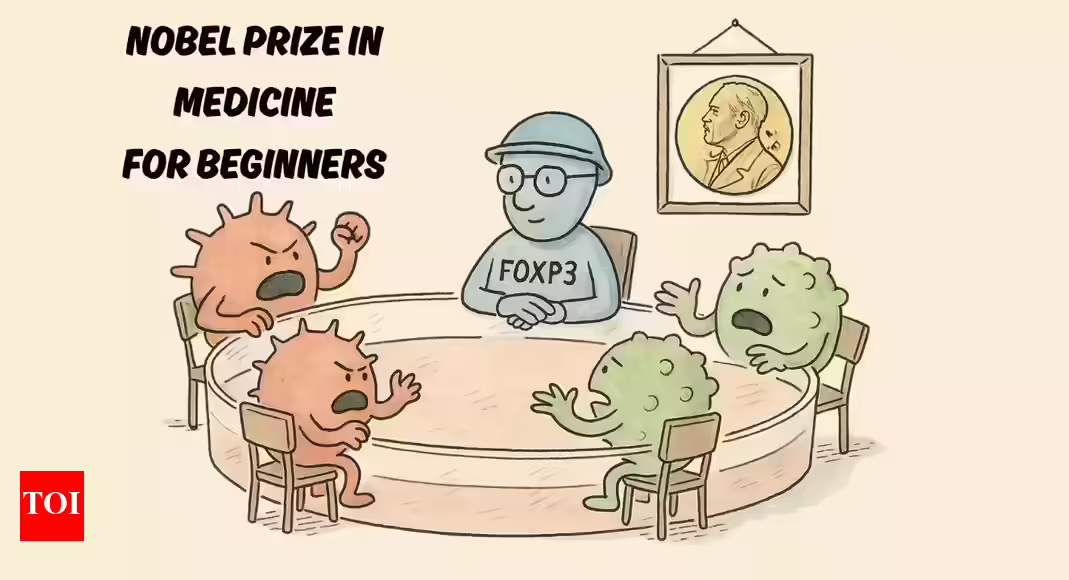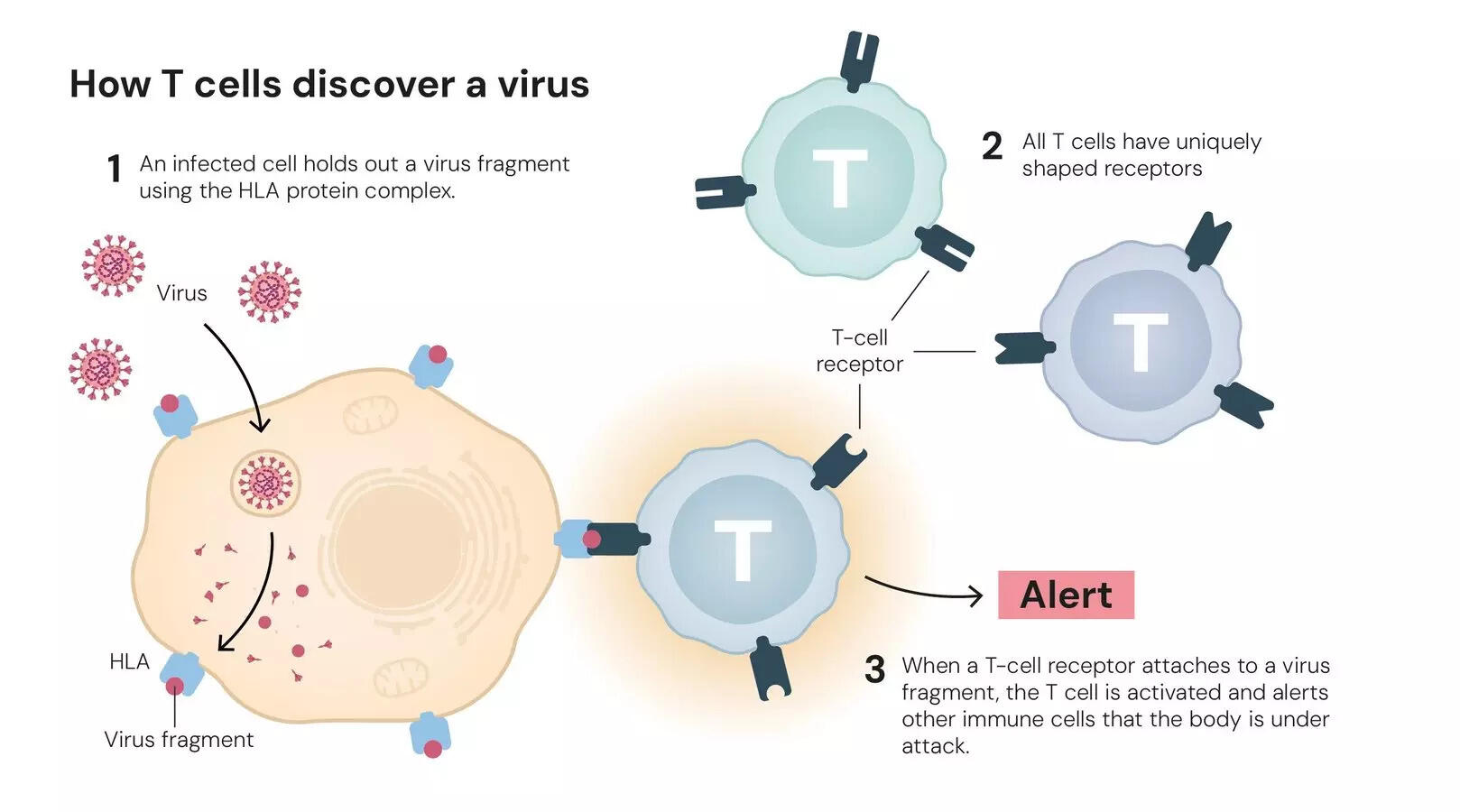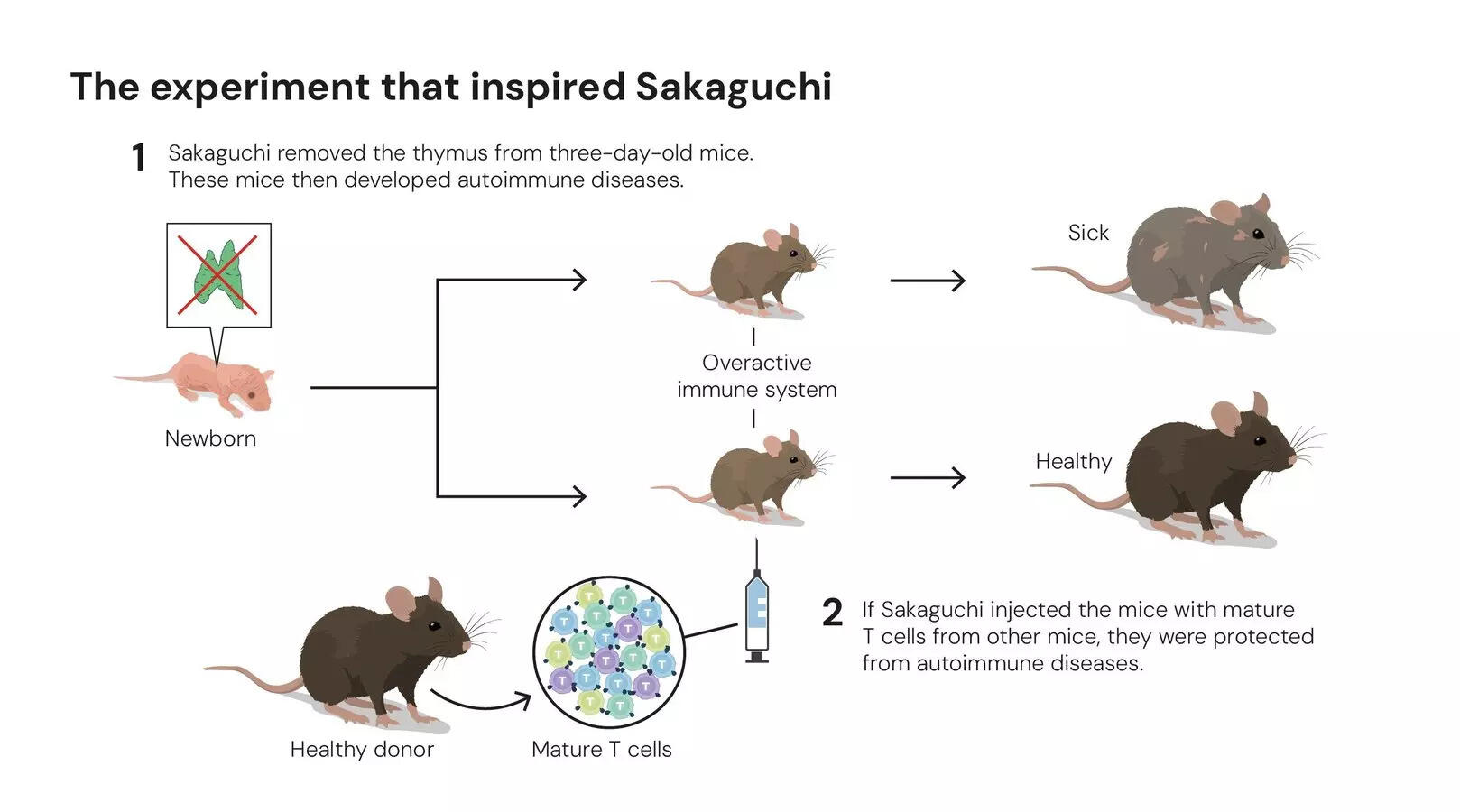2025 Nobel Prize in Medicine for Beginners: How Mary Brunkow, Fred Rasmdell, and Shimon Sakguchi found the body’s ‘peacekeepers’ | – The Times of India

Every year, the Nobel Prize in Medicine honours people who help us understand how the human body works — and how to fix it when it doesn’t. In 2025, the prize went to Mary Brunkow, Fred Ramsdell, and Shimon Sakaguchi. They discovered something remarkable: how the immune system stops itself from attacking the body it’s supposed to protect. Their work explained why most of us don’t suffer constant internal wars — and what happens when those peacekeeping systems fail.
The Problem: A Powerful Army Without Rules

Your immune system is your body’s army. It fights off viruses, bacteria, and infections every day. Its elite soldiers are called T cells. Some T cells attack invaders directly, while others coordinate the fight like generals. But sometimes, the army makes a terrible mistake — it attacks its own country.That’s what happens in autoimmune diseases like diabetes, multiple sclerosis, or arthritis. The immune system can’t tell friend from foe. For a long time, scientists believed that faulty soldiers were simply destroyed early in life in a process called central tolerance. But that couldn’t explain why some people still developed autoimmune diseases. Something else had to be keeping the peace.
The Discovery: The Immune System’s Peacekeepers
That “something else” was discovered by Shimon Sakaguchi, a scientist from Japan. In the 1980s, he was studying mice that developed strange diseases after their thymus — an immune organ — was removed. The mice’s immune systems went wild, attacking their own organs. Sakaguchi realised there must be special T cells that stop others from going too far — a kind of police force inside the immune army. After years of work, he found them. In 1995, he identified a new class of T cells that acted as peacekeepers. He called them regulatory T cells, or Tregs.Without them, the immune system spirals into chaos.
The Gene That Controls the Peace

While Sakaguchi was studying Tregs in Japan, two scientists in the United States — Mary Brunkow and Fred Ramsdell — were working on a mysterious mouse called the scurfy mouse.These mice had skin problems, huge spleens, and short lives. Their immune systems attacked everything, including their own bodies.Brunkow and Ramsdell spent years searching for the reason. Finally, in 2001, they found the cause — a broken gene on the X chromosome. They named it Foxp3.When the gene was fixed, the mice recovered. The same mutation was found in boys suffering from a rare disease called IPEX, where the immune system destroys the body’s organs.This gene, FOXP3, was the key that created the immune system’s peacekeepers — the regulatory T cells Sakaguchi had discovered.
The Connection: One Idea, Three Scientists
Two separate discoveries — one about the cells, the other about the gene — turned out to describe the same thing. In 2003, Sakaguchi proved that the FOXP3 gene controls the creation of regulatory T cells. Without it, the body can’t produce its peacekeeping force. Together, these findings solved the mystery of how the immune system stays balanced — powerful enough to fight invaders, but calm enough not to destroy itself.
Why It Matters
Their discoveries changed how medicine sees the immune system. Today, scientists are exploring how to use Tregs to treat disease.
- Autoimmune diseases: Boosting Tregs could help calm an overactive immune system in conditions like lupus or type 1 diabetes.
- Organ transplants: Tregs can help the body accept new organs instead of rejecting them.
- Cancer: In some cancers, tumours hide behind Tregs to avoid attack — so blocking them could help the immune system fight back.
The same discovery that prevents one disease could help cure another.
The Lesson: Peace Is Power
The 2025 Nobel Prize wasn’t about finding a new way to fight — it was about finding a way to stop fighting. It taught us that the secret to survival isn’t endless defence, but balance. The immune system, like society, needs laws, restraint, and peacekeepers. Thanks to Brunkow, Ramsdell, and Sakaguchi, we now understand the body’s greatest secret: sometimes, the power to stop a war is the greatest power of all.
In Simple Terms
Your immune system is an army. Sometimes it gets confused and attacks you. Sakaguchi found the peacekeeping cells that stop it.Brunkow and Ramsdell found the gene that creates those peacekeepers. Together, they discovered how your body stays at peace with itself — and that’s why they won the Nobel Prize in Medicine.
var _mfq = window._mfq || [];
_mfq.push([“setVariable”, “toi_titan”, window.location.href]);
!(function(f, b, e, v, n, t, s) {
function loadFBEvents(isFBCampaignActive) {
if (!isFBCampaignActive) {
return;
}
(function(f, b, e, v, n, t, s) {
if (f.fbq) return;
n = f.fbq = function() {
n.callMethod ? n.callMethod(…arguments) : n.queue.push(arguments);
};
if (!f._fbq) f._fbq = n;
n.push = n;
n.loaded = !0;
n.version = ‘2.0’;
n.queue = [];
t = b.createElement(e);
t.async = !0;
t.defer = !0;
t.src = v;
s = b.getElementsByTagName(e)[0];
s.parentNode.insertBefore(t, s);
})(f, b, e, ‘https://connect.facebook.net/en_US/fbevents.js’, n, t, s);
fbq(‘init’, ‘593671331875494’);
fbq(‘track’, ‘PageView’);
};
function loadGtagEvents(isGoogleCampaignActive) {
if (!isGoogleCampaignActive) {
return;
}
var id = document.getElementById(‘toi-plus-google-campaign’);
if (id) {
return;
}
(function(f, b, e, v, n, t, s) {
t = b.createElement(e);
t.async = !0;
t.defer = !0;
t.src = v;
t.id = ‘toi-plus-google-campaign’;
s = b.getElementsByTagName(e)[0];
s.parentNode.insertBefore(t, s);
})(f, b, e, ‘https://www.googletagmanager.com/gtag/js?id=AW-877820074’, n, t, s);
};
function loadSurvicateJs(allowedSurvicateSections = []){
const section = window.location.pathname.split(‘/’)[1]
const isHomePageAllowed = window.location.pathname === ‘/’ && allowedSurvicateSections.includes(‘homepage’)
const ifAllowedOnAllPages = allowedSurvicateSections && allowedSurvicateSections.includes(‘all’);
if(allowedSurvicateSections.includes(section) || isHomePageAllowed || ifAllowedOnAllPages){
(function(w) {
function setAttributes() {
var prime_user_status = window.isPrime ? ‘paid’ : ‘free’ ;
var geoLocation = window?.geoinfo?.CountryCode ? window?.geoinfo?.CountryCode : ‘IN’ ;
w._sva.setVisitorTraits({
toi_user_subscription_status : prime_user_status,
toi_user_geolocation : geoLocation
});
}
if (w._sva && w._sva.setVisitorTraits) {
setAttributes();
} else {
w.addEventListener(“SurvicateReady”, setAttributes);
}
var s = document.createElement(‘script’);
s.src=”https://survey.survicate.com/workspaces/0be6ae9845d14a7c8ff08a7a00bd9b21/web_surveys.js”;
s.async = true;
var e = document.getElementsByTagName(‘script’)[0];
e.parentNode.insertBefore(s, e);
})(window);
}
}
window.TimesApps = window.TimesApps || {};
var TimesApps = window.TimesApps;
TimesApps.toiPlusEvents = function(config) {
var isConfigAvailable = “toiplus_site_settings” in f && “isFBCampaignActive” in f.toiplus_site_settings && “isGoogleCampaignActive” in f.toiplus_site_settings;
var isPrimeUser = window.isPrime;
var isPrimeUserLayout = window.isPrimeUserLayout;
if (isConfigAvailable && !isPrimeUser) {
loadGtagEvents(f.toiplus_site_settings.isGoogleCampaignActive);
loadFBEvents(f.toiplus_site_settings.isFBCampaignActive);
loadSurvicateJs(f.toiplus_site_settings.allowedSurvicateSections);
} else {
var JarvisUrl=”https://jarvis.indiatimes.com/v1/feeds/toi_plus/site_settings/643526e21443833f0c454615?db_env=published”;
window.getFromClient(JarvisUrl, function(config){
if (config) {
const allowedSectionSuricate = (isPrimeUserLayout) ? config?.allowedSurvicatePrimeSections : config?.allowedSurvicateSections
loadGtagEvents(config?.isGoogleCampaignActive);
loadFBEvents(config?.isFBCampaignActive);
loadSurvicateJs(allowedSectionSuricate);
}
})
}
};
})(
window,
document,
‘script’,
);
[title_words_as_hashtags




